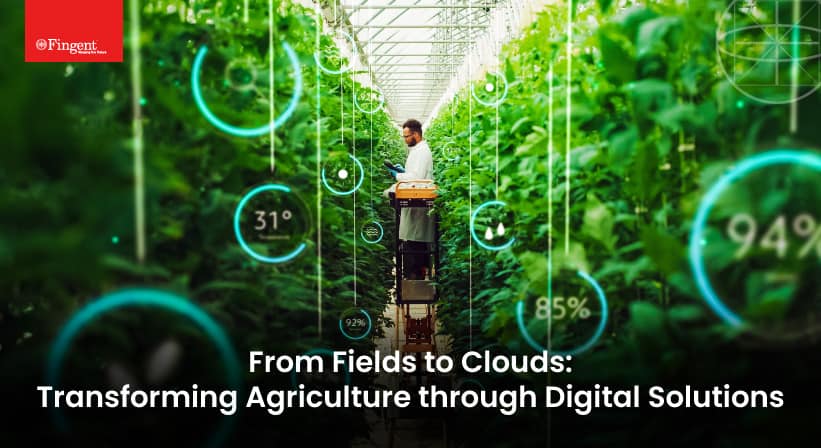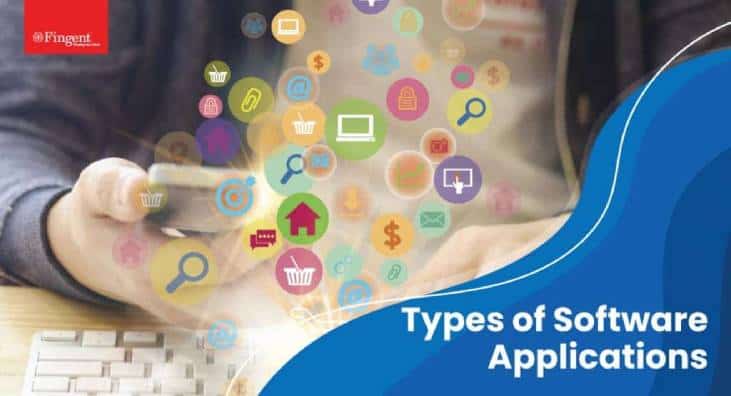Why Are Leading Businesses Prioritizing Application Modernization
“In Today’s era of volatility, there is no other way but to re-invent. The only sustainable advantage you can have over others is agility, that’s it. Because nothing else is sustainable, everything else you create, somebody else will replicate.” — Jeff Bezos, Founder, Amazon.
The world of technology is evolving at a fast pace, with newly emerging advanced applications almost every day. With the significant growth of technology, we can also witness the transition of companies from legacy systems to modern systems. That is what gives your business true agility.
Application modernization assists companies in eliminating needless operating costs, lowering capital expenditures, and freeing up workers to pursue new initiatives and revenue-generating plans. In this article, we will look at what modernizing your system application looks like and how it can benefit your company’s growth and success.
What Is Application Modernization?
In simple words, it is the practice of updating old software systems, also known as legacy systems, in order to retain the memory data but still benefit from the new framework. It is like renovating a house. Rather than discarding the older system, we can give it a good remodel and enhance its efficiency.
The global application modernization services market was valued at USD 11838.15 million in 2021 and is predicted to grow at a CAGR of 14.31% over the forecast period, reaching USD 26405.06 million by 2027. For many businesses, this entails re-programming existing legacy workloads onto current cloud-based platforms or splitting monolithic software into smaller components, such as microservices, and then programming these microservices.
Why Has It Become Essential?
The main and most obvious reason for application modernization is to enhance efficiency, which will in turn give the company a better stand in this immensely competitive industry. Modernizing apps may help businesses take advantage of new technology and streamline processes among other things.
Remember that there is an unseen cost in trying to make do with legacy software. Outdated software can reduce productivity, stifle expansion, and degrade the customer experience. On the other hand, a strong application modernization plan will also lower the resources needed to run an application, enhance the frequency and dependability of deployments, and improve uptime and resilience.
Top Benefits
Listed below are the top benefits you can experience by modernizing your system software:
1. Improved efficiency: Modernizing applications enables organizations to simplify processes, minimize layoffs, and automate repetitive procedures, resulting in higher productivity and resource utilization. App modernization also helps to maintain a variety of existing procedures, ensuring company continuity. According to IBM, upgrading legacy systems can increase developer productivity by up to 40%.
2. Cost benefits: You will cut expenses, improve dependability, and boost consumer confidence, and also position your organization to seize new possibilities faster. According to Intel, recent research found that when organizations lower their technical debt load by updating their legacy app portfolio, they get immediate savings of 32% of their IT expenditure.
3. Scalability: Modernized applications are often built to be more scalable, making it simpler to handle growing workloads and respond to changes in user demand. This is critical for businesses as they expand and need to support a larger user base or more sophisticated processes.
4. Flexibility: The flexibility of a business goes hand-in-hand with its ability to scale from smaller user bases to larger user bases. It can also be seen from the perspective that with advanced technology as your backbone, your company is more flexible to adaptations, upgrades, and changes in general. Agility is a product of flexibility and the best example for this is how Pinterest grew its user base from 50,000 to 17 million in only nine months by moving its processing and storage to Amazon Web Services.
5. User experience: For any organization, customer experience is the topmost priority. Giving your users what they want and keeping them satisfied is the main goal. Modernized programs frequently have more user-friendly interfaces, enhanced navigation, and responsive design. This improves the user experience and helps to retain consumers, perhaps leading to higher customer satisfaction and loyalty
6. Integration capabilities: Modernized applications provide for easier integration with other systems and third-party services. This is critical for businesses trying to establish a unified digital environment in which data and processes flow seamlessly between apps and platforms. As applications migrate to the cloud, the ability to link them to databases and other resources becomes critical in generating cost savings and enhanced creativity.
7. Competitive edge: Ultimately as mentioned above, the main goal is a competitive edge, a winning chance, a head- start in the race. Modernized apps may help businesses remain ahead of the competition by allowing them to offer new features, deliver faster updates, and adapt to market changes more efficiently. By offering unique, quick-to-market applications, your company may better adapt to new market possibilities, increase efficiency, and engage consumers. According to IDC research, companies that engage in modern application development processes get 51% faster time-to-market and 41% more frequent distributions of software than those who do not.
Don’t Let Your Legacy Applications Sloth Your Business Growth. Plan Your Application Modernization Project Today!
Identifying When Your Company Needs Application Modernization
Identifying when your company’s systems require modernization is critical for staying competitive, increasing productivity, and ensuring long-term success. Here are some significant indicators that it is time to explore application modernization:
- Performance Problems: Recurrent problems with your applications, including sluggish response times, system failures, or blackouts, may be a sign that they are not able to handle the current workload.
- Security Vulnerabilities: Security risks are more likely to affect legacy systems. Your company is vulnerable to data breaches and cyberattacks if your apps do not have the latest security features and upgrades.
- Lack of flexibility and scalability: Your organization’s growth may be hindered if your present applications are not flexible and scalable enough to meet changing business requirements or rising workloads. In order to adapt to changing requirements, modern applications are made to be more scalable and adaptable.
- Difficulty in Integration: Data flow and cooperation may be hampered if your applications are difficult to integrate with other systems in your company or with outside partners.
- Inadequate user experience: A poor user experience can result in customer and staff dissatisfaction. Your applications could benefit from modernization if they lack features that improve usability or have an outdated user interface.
The Best Strategies For Application Modernization
Application modernization is a complex process that requires severe attention to details. It’s often beneficial to work with a cross-functional team and involve key stakeholders throughout the modernization journey. Here are a few of the best strategies to adopt while modernizing your system software application:
- Automation Is Key: Modernization teams are frequently stuck with manual methods that do not scale across a complete application estate. Thus, adding intelligent automation, AI, and data science to modernization and developing a repeatable pipeline for refactoring are critical.
- Define business Goals: An application modernization evaluation begins by defining which business goals the company wants to achieve through modernization. Common corporate motivations driving app modernization include cost savings, performance enhancement, enhanced security, and simplified management.
- Deep Application Observation: To modernize an existing monolith, deep observation is required in addition to basic static code analysis. This includes deeper domain-driven behavior analysis and continuously tracking dependency interactions.
- User Training and Change Management: Make investments in these areas to help end users move smoothly. Emphasize the advantages of modernization initiatives and offer assistance throughout the adoption process.
- Frequent Updating and Maintenance: The process of modernization never ends. To ensure that programs stay up-to-date with changing business requirements and technology changes, schedule frequent upgrades and maintenance.
How Can Fingent Help?
Leveraging app modernization to improve efficiency is a challenging task, but worry not because a competent development solution like Fingent can accomplish it with ease. At Fingent, our team of professionals can implement cutting-edge technology such as cloud-native solutions, artificial intelligence, and machine learning software in your organization. With satisfied customers worldwide, we provide tailored service and support to fit your company’s needs, with the flexibility to scale as needed.
Contact us to learn more about how we can help!
Stay up to date on what's new

Recommended Posts

20 Dec 2023 B2B
Driving Smart and Sustainable Agriculture with Customized Technology!
As the world grapples with the challenges of climate change, soil degradation, and resource scarcity, agricultural organizations find themselves at a critical juncture. The urgency for adopting sustainable farming practices,……

10 Oct 2023 B2B
Guarding Your Digital Fortresses: The Imperative of Application Security
In the ever-evolving landscape of cybersecurity, application security stands as the impervious armor that shields your organization's digital fortresses. Imagine your organization's applications as the kingdom's gates – if left……

08 Sep 2023 Education Healthcare
Types of Application Software: A Detailed Guide for 2024
Types of Application Software: Guide for 2025 Table of Contents Understanding Application Software: Types and Business Benefits What is Application Software? Examples of Application Software Difference between System Software and……

28 Aug 2023 B2B
A Quick Guide On Open Source Security and Risk Management
“In the digital era, privacy must be a priority. Is it just me, or is secret blanket surveillance obscenely outrageous?” - Al Gore The internet is a great big place with……
Featured Blogs
Stay up to date on
what's new















 US
US Insurance
Insurance









































